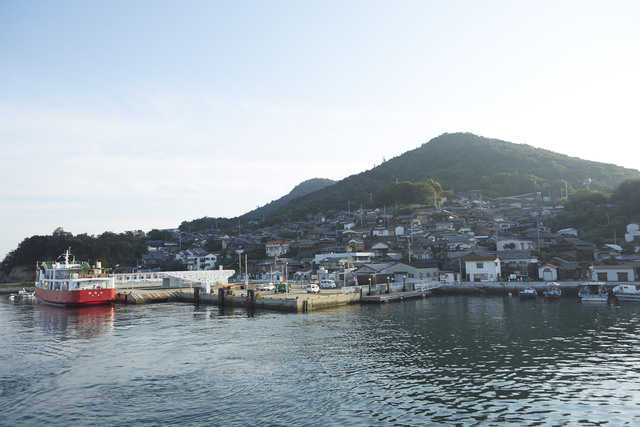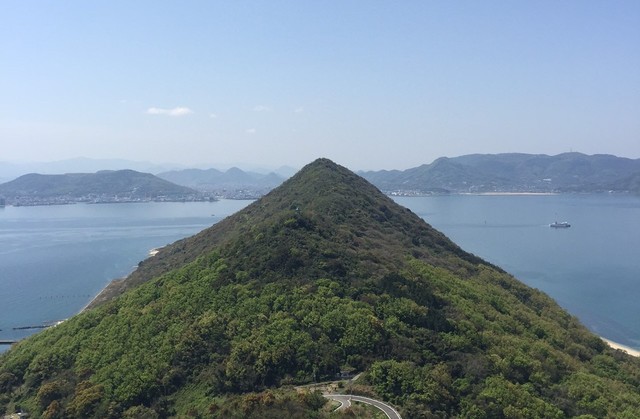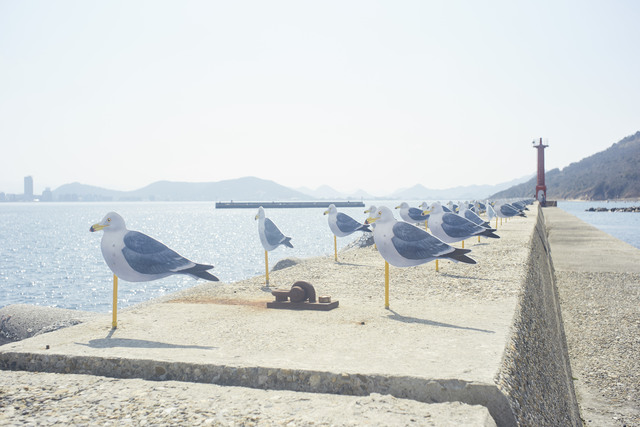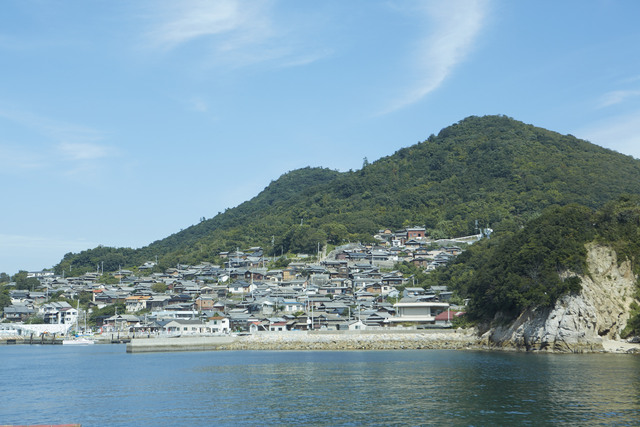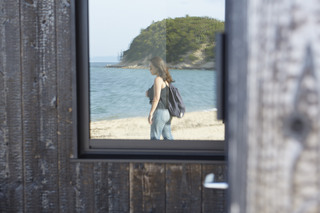With Takamatsu as a base, you have quick, cheap and easy access to a diverse range of islands in the Setouchi Inland Sea. Only 30 minutes away by high-speed ferry, there’s well-known Naoshima, the artistic focal point of the Setouchi art festival and home to some of Japan’s finest contemporary galleries. Nearby, there’s Teshima, too, one of many quaint islands that now blend island traditions and picturesque landscapes with modern art venues. Then there’s the much larger Shodoshima (also 30 minutes from Takamatsu), known for its soy sauce factories, olive production and rugged scenery. The possibilities for day-long island-hopping are numerous; however, if you want to explore Shikoku’s island traditions in depth while taking in Setouchi’s cutting-edge art, look no further than the 15-minute ferry trip to explore the less-visited Megijima and Ogijima.
Demon Island
Stepping off the ferry at Megijima Island, it doesn’t take long for the ogres to grab your attention. In the tiny island’s ferry terminal-cum-tourist information center sit brightly-colored stuffed ogre toys holding soft, spiked clubs. Cheerful ogres adorn posters. Look back at the ferry and painted on the hull there’s a friendly looking green ogre waving a sailor’s hat. Welcome to “Demon Island”.
Megijima measures less than three square kilometers and as such, unlike a large island like Shodoshima where you really need a car, all you need do is rent a bicycle (700 yen for four hours) from the port and you can take in Megijima’s blend of folklore, nature and art in a few leisurely hours. Saddled up, you can start with a steep two-kilometer cycle to the island’s main non-art attraction, the Onigashima (Demon Island) caverns, via a route that winds past vegetable patches, pockets of dense vegetation and roadside speckled with wild flowers. Except for a creaking bicycle chain and perhaps the far-off hum of a ferry, the only sounds here are birdsong and the buzzing of insects. Even when visiting from a green city like Takamatsu, it feels like you’ve been dropped a million miles away, deep within nature.
At the top of the hill, the caverns form a dank underground complex, which legend tells was once home to ogres, a notion that has partly inspired the classic folklore tale of Momotaro (Peach Boy), a story about a boy sent down from heaven inside a giant peach, who later goes off to fight ogres on a “demon island”. More likely, the caverns and their low-ceilinged passageways were once used by smugglers. Nowadays, however, they are home to ogre statues and the occasional artwork, which can be seen on a route that eventually leads out of the cavern and up to an observation deck that provides panoramic views far across the Seto Inland Sea.
Back near the port, Megijima flexes its artistic muscles with a dozen or so art venues and installations linked to the Setouchi Triennale, all of which are within easy walking or cycling distance of one another. One of the new arrivals in 2016 is Yoichiro Yoda’s Island Megi Theater, a disused storehouse that has been turned into an old Manhattan-inspired movie theater, which Yoda hand-painted with iconic movie and movie star images. A few hundred meters away, another artwork is Shinro Otake’s Mecon, a defunct elementary school transformed by mosaics made of kitsch tiles, boating paraphernalia and other bits and pieces woven together in Otake’s distinctive style. Then there’s Leandro Erlich’s Presence of Absence, two connected tatami mat rooms filled with visual trickery and set in a renovated house that is also a small restaurant and café.
On to Ogijima
Hop back on the ferry and it’s only 15 minutes to another of the Setouchi islands, Ogijima. Slightly smaller than Megijima and with a similar population of about 200, Ogijima is also dotted with art installations. Spending a few hours here, however, also provides the opportunity to experience some of old Shikoku. From the port, traditional wooden houses work their way up a hill that forms the majority of inland Ogijima, tightly woven together by a maze of narrow and winding streets where wild flowers grow out of cracks in the pavement and cats bask in the sun. Like many other Setouchi islands, Ogijima has been given a new lease on life by art. Nonetheless, old traditions still exist; the harbor remains home to working fishing boats and except for the occasional blast of artistic color in the streets, it feels as if nothing has changed on the island for decades – until you step into the collection of old houses and warehouses that now function as galleries and art installations.
Among the standout artworks here is the old white-walled storehouse that now houses Mayumi Kuri’s Memory Bottle. From the outside, the minimalist kura design suggests that the building holds rice supplies or piles of produce. Inside, however, illuminated glass bottles containing photos and other mementos hang from the ceiling like a giant, glistening bunch of grapes. A few twists and turns away through Ogijima’s cramped back alleys, Haruki Takahashi’s Sea Vine, a sprawling mass of delicate porcelain vines, hangs against a backdrop of tatami mat flooring and sliding paper screen doors in what had once been someone’s home. Contemporary art meets folklore on Megijima; on Ogijima, it meets tradition, and does so effortlessly in a natural island setting that is as mesmerizing as the art itself.
Getting there
Megijima is a 15-minute ferry ride from Takamatsu Port, with ferries departing on the hour, every two hours, from 08:00 to 18:00. The same ferry leaves Megijima for Ogijima at 20 past the hour every two hours. The last ferry back to Takamatsu leaves Ogijima at 17:00 and Megijima at 17:20.
20 records
 FIND SHIKOKU
FIND SHIKOKU




